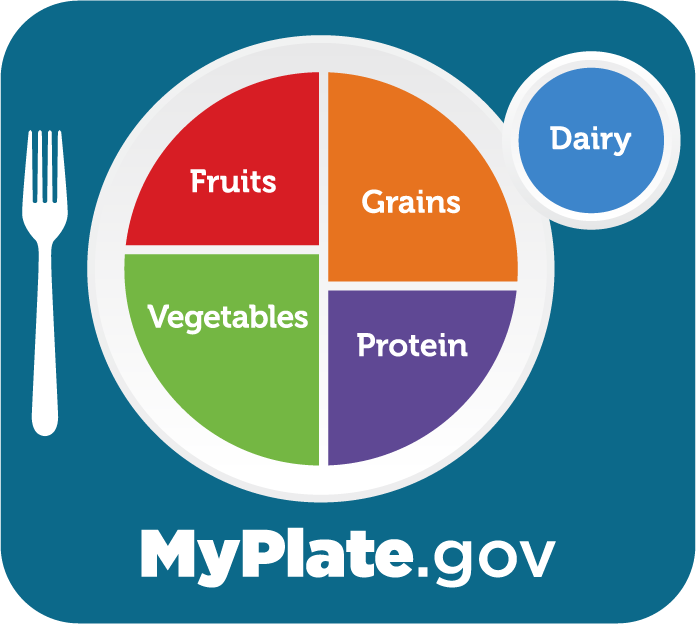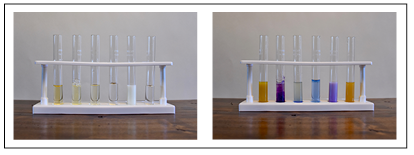Agricultural Literacy Curriculum Matrix
Lesson Plan
Eggs: Protein MVP
Grade Level
3 - 5
Purpose
Students explore the importance of protein to a healthy diet and discover that eggs are a nutritious food and a good source of protein. Grades 3-5
Estimated Time
1 hour
Materials Needed
Engage:
- Food Match Cards
- MyPlate Activity Poster (available for purchase from agclassroomstore.com) or MyPlate Image
Activity 1: The Importance of Protein
- Good Enough to Eat: A Kid's Guide to Food and Nutrition by Lizzy Rockwell
- MyPlate Activity Poster or MyPlate Image
- Daily Protein Foods Table
- Food Model Cards (available for purchase from agclassroomstore.com) or Protein Foods List
- Protein Daily Requirements activity sheet
- School Lunch Menu
- Highlighters
- Protein Foods List
Activity 2: Eggs—Protein MVP
- Protein Lab Demonstration video
- Protein Demonstration Lab Sheet
- Colored pencils
- incredibleegg.org recipes
Vocabulary
antioxidant: a substance present in foods that can prevent or slow the harmful effects of free radicals in the body
MyPlate: nutritional guide published by the United States Department of Agriculture (USDA); icon depicting a place setting with a plate and glass divided into five food groups
nutrient: a substance that provides nourishment essential for growth and the maintenance of life
protein: an essential nutrient responsible for building tissue, cells, and muscle
yolk: the yellow internal part of a bird's egg, which is surrounded by the egg white, is rich in protein and fat, and nourishes the developing embryo if the egg is fertile
Did You Know?
- To tell if an egg is raw or hard-cooked, spin it! If the egg spins easily, it is hard-cooked. If it wobbles, it is raw.3
- The color of an egg's yolk is affected by the diet of the hen.4
- On average, a hen in a commercial egg production operation lays about 300 eggs a year.5
Background Agricultural Connections
MyPlate is the current nutrition guide published by the United States Department of Agriculture (USDA) Center for Nutrition Policy and Promotion. The guide features a color-coded image of a place setting with a plate and glass divided into five food groups. Protein, dairy, vegetable, grains, and fruits make up the five food groups. Almost all of the foods found in the five food groups of MyPlate begin on a farm.
The Protein Foods Group includes foods made from meat, poultry, seafood, beans and peas, eggs, processed soy products, nuts, and seeds. The amount of protein foods you need to eat depends on age, gender, and level of physical activity. In general, 1 ounce of meat, poultry, or fish, 1/4 cup cooked beans, 1 egg, 1 tablespoon of peanut butter, or 1/2 ounce of nuts can be considered to be a 1 ounce-equivalent from the Protein Foods Group. The table below shows the recommended daily amounts.1
Proteins are important building blocks for bones, muscles, cartilage, skin, and blood. Protein foods contain B vitamins, vitamin E, iron, zinc, and magnesium. B vitamins help the body release energy, aid with the function of the nervous system, and assist with the formation of red blood cells and the building of tissues. Vitamin E functions mainly as an antioxidant that helps protect cells from damage. Iron carries oxygen in the blood. Zinc helps with the proper function of the immune system and is necessary for biochemical reactions. Magnesium builds bones and releases energy from muscles.
Eggs, a part of the Protein Foods Group, can help meet a variety of nutrient needs across the lifespan. Eggs are a good or excellent source of eight essential nutrients including protein and choline. Choline is an under-consumed nutrient the Dietary Guidelines recommend to support brain health. Eggs are one of the few natural food sources of vitamin D, which along with calcium, helps support growing bones. The yolk, the yellow part of the egg, contains about half of the egg's protein. While egg whites contain some of an egg's high-quality protein, riboflavin and selenium, the majority of an egg's nutrient package is found in the yolk, including vitamin D, choline, lutein, and zeaxanthin. At 15¢ per serving, eggs are the least expensive source of high-quality protein.2
Engage
- Provide each student with a Food Match Card.

- Ask the students to go around the room and find the person who has a match to their card. The cards are a match when the food card pairs with the plant or animal the food comes from.
- Show the students the MyPlate Activity Poster or project the MyPlate Image onto a large screen. Point out that each different colored section of MyPlate represents one of the five food groups.
- Tell the students that all of the foods on the cards have something in common. They all belong to the same food group. Ask the students, "In which food group do these foods belong?" (The Protein Foods Group.)
- Explain to the students that they are going to investigate the Protein Foods Group.
Explore and Explain
Activity 1: The Importance of Protein
- Read the book Good Enough
 to Eat: A Kid's Guide to Food and Nutrition by Lizzy Rockwell.
to Eat: A Kid's Guide to Food and Nutrition by Lizzy Rockwell. - Show the students the MyPlate Activity Poster or project the MyPlate Image onto a large screen. Point out the purple "Protein" section. Ask the students, "Why is protein important?" Reread the section of the book about protein.
- Ask the students to name foods that belong in the Protein Foods Group. Make a list of the foods the students name on the board.
- Provide each student with a highlighter and a school breakfast and/or lunch menu. Study the menu. As a class, identify and highlight the foods from the Protein Foods Group. Add any new foods to the list on the board.
- Pass out the Protein Daily Requirements activity sheet. Project the Daily Protein Foods Table onto a large screen. Ask the students to use the chart to identify the amount of protein they should eat each day and record the amount on their activity sheet.
- Provide the students with Food Model Cards from the protein group or refer to the Protein Foods List. Instruct the students to identify foods they could eat for one day's breakfast, lunch, and dinner that would meet their daily requirements for protein. Have them fill out the Protein Daily Requirements activity sheet with their choices.
Activity 2: Eggs—Protein MVP
Teacher Note: Due to the precautions that need to be taken when working with Biuret reagent, a lab demonstration video has been provided. It is not recommended to use this chemical in an elementary classroom.
- Pass out a Protein Demonstration Lab Sheet to each student.
- Explain to the students that they will be watching a video lab demonstration that tests six different samples for the presence of protein—apple juice, egg white, cooking oil, water, milk, and lemon-lime soda.
- Biuret reagent is a chemical used to detect the presence of proteins. If proteins are present, the solution will turn purple. Ask the students to predict which sample(s) they think will contain protein on their lab sheet.
- View the Protein Lab Demonstration video, pausing when indicated to record observations.
- At minute :35, pause the video and have the students record which sample is in each test tube and use colored pencils to record their observations of each test tube on their lab sheets.
- At minute 1:48, pause the video and have the students use colored pencils to record their observations of what each test tube looks like after the Biuret reagent is added.
- Ask the students, "Which sample(s) contain protein? Were your predictions correct?"

- Explain to the students that eggs are a naturally nutrient-rich food, containing eight essential nutrients, including protein. Eggs are a high-quality complete protein. One egg contains 6 grams of high-quality protein and all nine essential amino acids for only 70 calories.
- Ask the students to create a nutritional meal plan that features eggs. Visit the recipes at incredibleegg.org for inspiration.
Elaborate
-
Complete the GrowingGreat: Powerful Proteins activity.
Evaluate
After conducting these activities, review and summarize the following key concepts:
- The Protein Foods Group includes foods made from meat, poultry, seafood, beans and peas, eggs, processed soy products, nuts, and seeds.
- Proteins are important building blocks for bones, muscles, cartilage, skin, and blood.
- Eggs are a nutritious food and a good source of protein.
Sources
- https://www.myplate.gov/eat-healthy/protein-foods
- https://www.eggnutritioncenter.org/downloads/toolkits/Protein-Fact-Sheet.pdf
- https://thinkegg.com/index.php/21-2/
- https://www.ncbi.nlm.nih.gov/pmc/articles/PMC6470839/
- https://extension.psu.edu/modern-egg-industry
Recommended Companion Resources
Author
Lynn Wallin
Organization
National Center for Agricultural Literacy
| We welcome your feedback! If you have a question about this lesson or would like to report a broken link, please send us an email. If you have used this lesson and are willing to share your experience, we will provide you with a coupon code for 10% off your next purchase at AgClassroomStore. |
